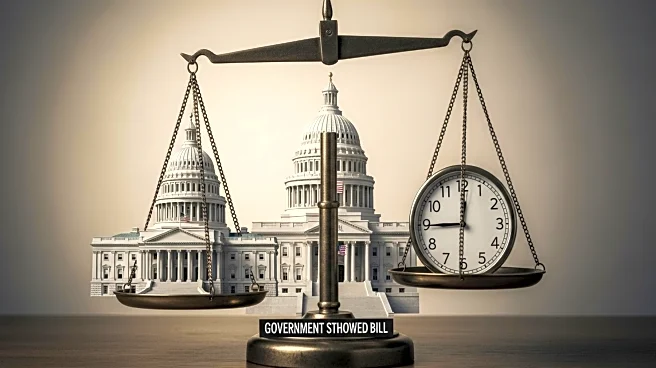What's Happening?
Frank Bisignano, the current Commissioner of the Social Security Administration (SSA), has been appointed as the CEO of the Internal Revenue Service (IRS) by Treasury Secretary Scott Bessent. This new role is a part of a restructuring effort at the IRS, following the resignation of its most recent commissioner, Billy Long, who stepped down after a brief tenure. Bisignano, a former Wall Street executive and CEO of Fiserv, will oversee daily operations at the IRS while continuing his duties at the SSA. The appointment has raised concerns among Social Security advocates about the potential impact on the SSA, especially given recent job cuts at the agency under the Trump administration.
Why It's Important?
The dual role assigned to Bisignano is significant as it highlights the ongoing challenges within major federal agencies like the IRS and SSA. The IRS has faced leadership instability, and Bisignano's appointment aims to bring stability and improve operations. However, the decision has sparked debate about the feasibility of managing two large agencies simultaneously. Social Security advocates argue that the SSA requires a full-time commissioner to address its challenges, including service delivery and staffing issues. The outcome of this appointment could affect millions of Americans who rely on these agencies for services and benefits.
What's Next?
The appointment of Bisignano is expected to lead to further scrutiny from advocacy groups and possibly Congress, as they assess the impact on both the IRS and SSA. The focus will be on how effectively Bisignano can manage the dual responsibilities and whether this move will lead to improved services at both agencies. Stakeholders will likely monitor the situation closely, especially in light of the SSA's recent staffing reductions and the IRS's need for enhanced customer service and privacy measures.
Beyond the Headlines
This development raises questions about the broader implications of consolidating leadership roles in federal agencies. It could set a precedent for future appointments, where efficiency and technological improvements are prioritized over traditional leadership structures. The ethical and operational challenges of such dual roles will be a topic of discussion among policymakers and public administration experts.










